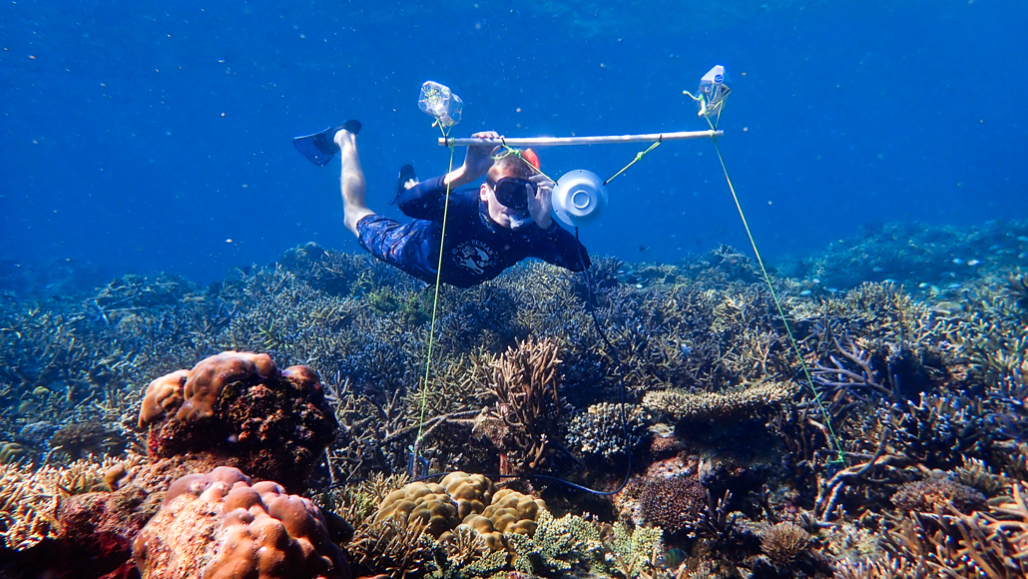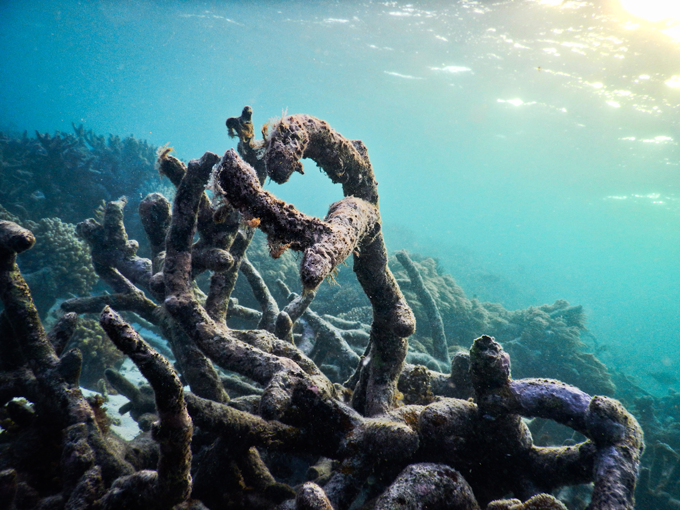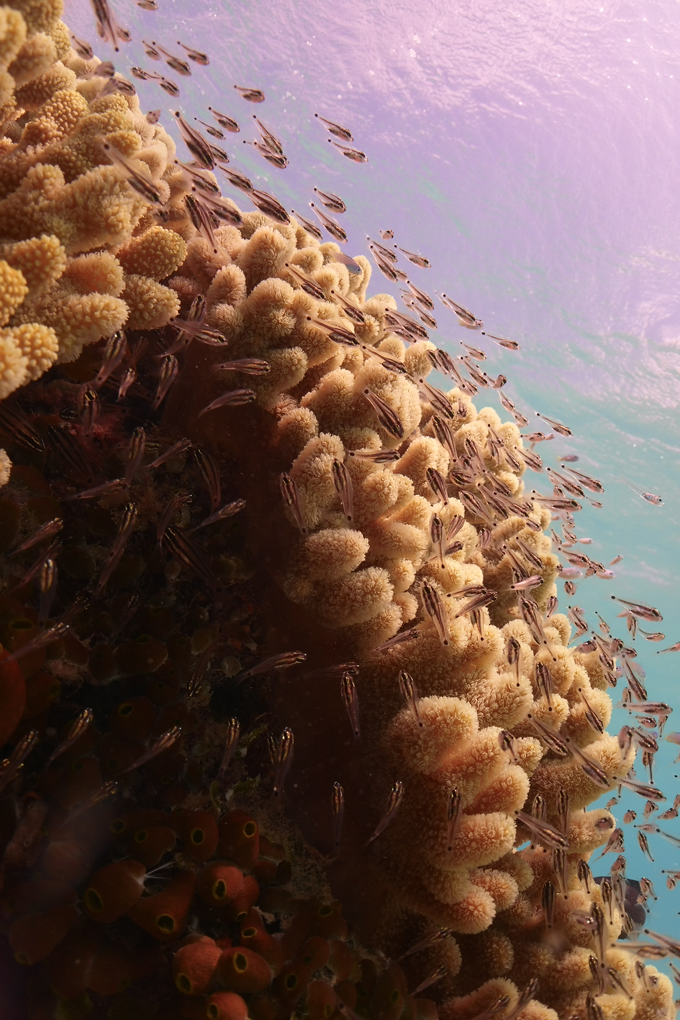Healthy coral reef sounds attract fish searching for a home
Underwater speakers may prove useful in efforts to restore some reefs

Tim Gordon sets up a loudspeaker above a section of coral.
Harry Harding/Univ. of Bristol
Coral reefs around the world are in hot water. When there’s a heat wave, ocean temperatures rise. That heat causes corals to lose their color, or bleach. It’s the first sign that the corals are dying. Fish then leave, looking for healthier sites. Without the fish activity, reefs fall silent. A new study finds that playing the sounds of a healthy reef can attract fish back to dead or dying areas. Indeed, those sounds could help bring a reef back to life.

Tim Gordon is a marine biologist at the University of Exeter in England. He studies the impact of sound on marine animals at the Great Barrier Reef in Australia. He and his research group “marveled at the diversity of sounds you can hear on a healthy reef.” And they were shocked by how quiet the reefs became as they died. That got him wondering: Could sound help renew dying reefs by attracting young fish?
It’s a critical question. Vast sections of the Great Barrier Reef have bleached during the past five years. But how could a seawater temperature increase of as little as 1 degree Celsius (1.8 degrees Fahrenheit) cause such extensive damage?
Living reefs house thousands of tiny animals, known as coral polyps. They live amongst the skeletal remains of their ancestors. Those polyps have a symbiotic relationship with algae called zooxanthellae (ZOH-uh-zan-THEL-ay). These tiny algae live inside a coral polyp’s tissues. They’re what give coral its bright color. The algae use sunlight to make sugar. This feeds not only the algae, but also the coral polyp.
Corals and their zooxanthellae thrive in warm tropical waters. But when the water gets too hot, the tiny algae become damaged. That causes corals to boot them out. Without their colorful companions, the coral polyps become transparent. Then the bone-like framework the polyps live in shows through. The reef turns white, or bleaches. If the water stays too warm, the polyps don’t get enough food. Eventually they die. The noise-making animals that had lived around them now must go in search of a new neighborhood. They leave behind a barren — and silent — reef.
Sound helps reefs rebound
Gordon collected pieces of dead coral from an area affected by bleaching. He used them to create 33 patches, or mini-reefs, along the Great Barrier Reef. Each measured 2 meters (6.6 feet) across. He placed them at least 25 meters (82 feet) from each other and from other reefs. Gordon left 11 patches alone. These served as his controls. He set up a loudspeaker and amplifier around another 11 patches. The speakers played healthy reef sounds. The last 11 patches served as a different type of control. They got a set-up that looked like the loudspeaker but played no sound.
Credit: Tim Gordon/Univ. of Exeter
Sounds piped in to 11 of those mini reefs had been recorded at the Great Barrier Reef before the bleaching events occurred. A healthy reef is full of popping, crackling, whooping and grunting. This comes from the fish, shrimp and other organisms that live there. It was these sounds that Gordon played through his speakers.
He then looked for juvenile fish. After hatching from their eggs, fish larvae float adrift in open water. When they get big enough, they search for a place to call home. Their search happens mostly at night, when predators have a hard time spotting prey. So Gordon played those healthy reef sounds all night long, for 40 nights in a row. Each day, he counted fish at the patches.

Young fish arrived at all three types of patches. But they showed up more quickly at the ones that had sound. What’s more, those mini-reefs ended up with twice as many fish by the end of the 40 days. That was true for all kinds of fish, from herbivores (plant-eaters) and plankton-eaters to predatory species. Reefs with sound also had more species overall. Gordon found no difference between the two types of controls. It was sound, not the speaker set-up, that had drawn in the extra fish.
The team published its findings November 29 in Nature Communications.
Playing healthy reef sounds “adds another powerful tool to our reef-restoration toolbox,” says Jordan Hollarsmith. She is a marine ecologist in Canada at Simon Fraser University in Burnaby, British Columbia. She was not involved with the study. She says that in her experience doing reef restoration, “a healthy herbivore community was essential for the success of the restoration.”
But, Hollarsmith cautions, “It is critical to remember that the most powerful tool we have is to stop the rapid progression of climate change.” Reef restoration won’t last long if people continue to burn fossil fuels, she says. Burning fossil fuels releases carbon in the form of carbon dioxide, a greenhouse gas. “The best thing teens can do for coral reefs is to educate themselves and, if old enough, vote for politicians who appreciate and will act on the dangers of climate change.”
Gordon agrees. Playing healthy reef sounds is “by no means a silver bullet for the coral reef crisis,” he says. “If we’re serious about saving coral reefs on a big scale, we have to be serious about carbon reduction.”







